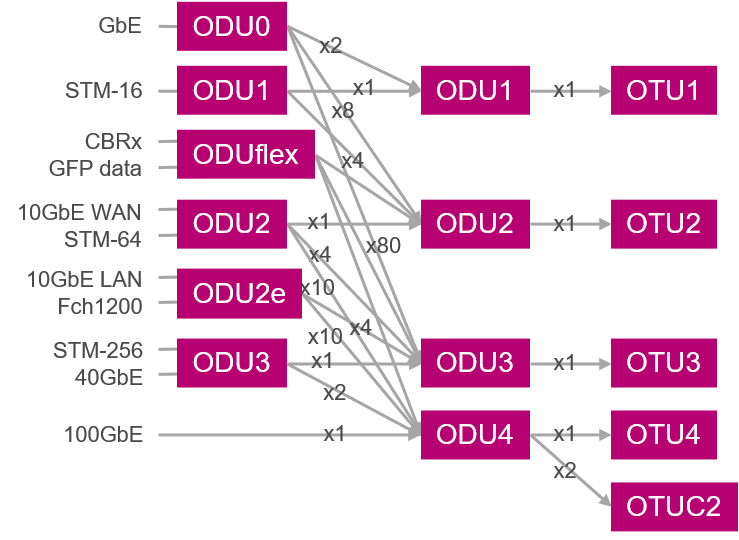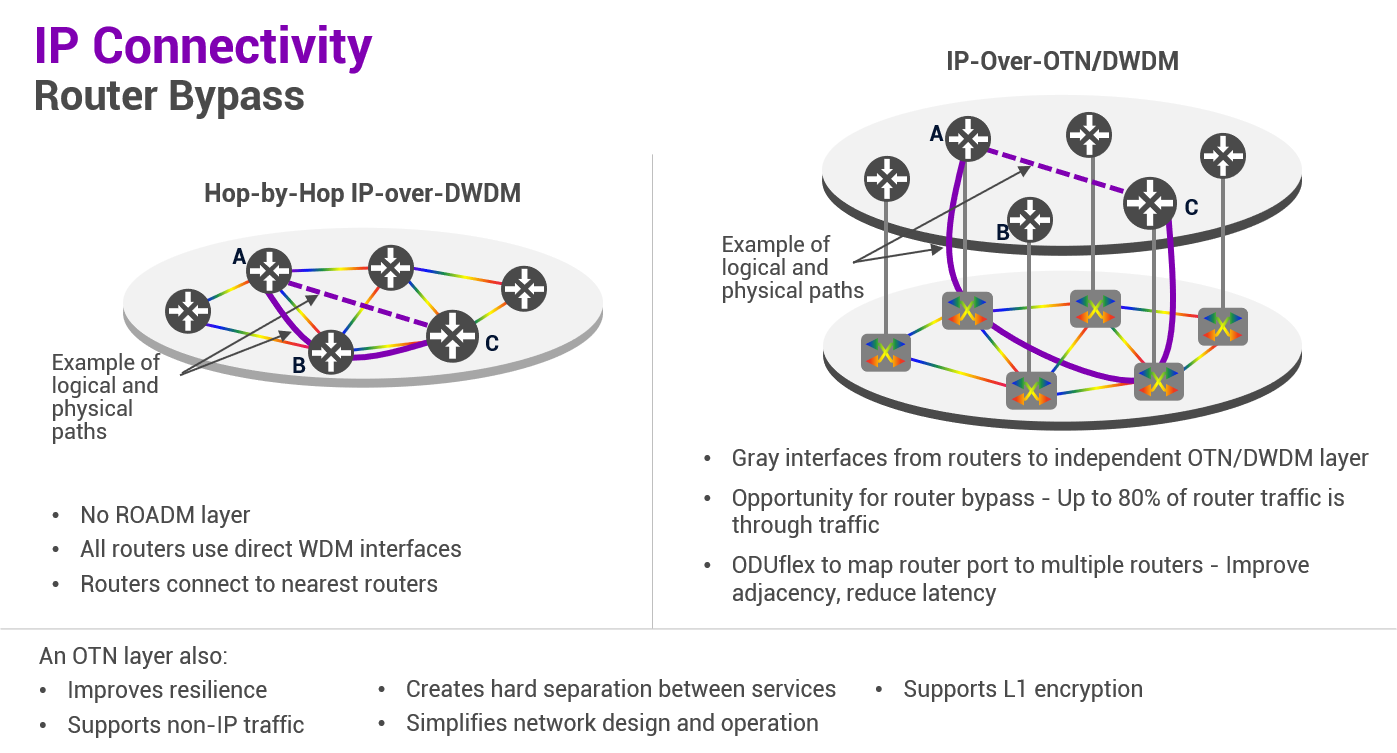What Can OTN Do for Me?
The question I am regularly asked is, “What use is OTN, when services are all IP, and routers handle connectivity directly across optical fiber connections, or wavelengths on optical fiber (IPoWDM)?”

What is Optical Transport Network (OTN)?
OTN is the abbreviation for Optical Transport Network(ing?) – in its broadest sense this covers any network connected by optical fiber. Not the most specific of definitions.
Generally, OTN is taken to be the ITU-T G.709 multiplexing standard created to organize how services are carried on wavelength division multiplexed (WDM) networks. The challenge was, and is, that while a wavelength can carry many bits per second (10 billion, 100 billion, soon 1 trillion,)not every service instance requires this much capacity. How can different services be packed to efficiently fill a wavelength? The ITU-T answer is OTN, a nested set of containers called ODU (Optical Data Units) starting with ODU-0, which can hold GbE, rising to ODU-4 (big enough for 80 x GbE or 1 x 100GbE) and now extended to N x 100G as OTUCn (e.g OTUC4 carries a 400G payload).
OTN also adds specific features to facilitate OAMP (Operations, Administration, Maintenance and Performance functions,) which have to do with managing quality and resilience, as well as controlling transport functions.
So What Can OTN Do for Me?
Clearly routers are needed for IP based services, but why introduce an additional layer?
There are several reasons:
- Reducing Complexity. Routers and routed networks are complex, as are WDM and OTN . A single network incorporating IP and WDM functions can be difficult to manage, leading to more expenses and risk. Separating the routed network from the WDM network leads to a more easily understood and stable solutions. OTN is designed to efficiently work with WDM.
- Resiliency. A large, resilient network should not rely on a single protection mechanism, which can get overwhelmed. Using the connectivity layer (L1) to recover from connectivity faults removes a lot of reconfiguration load from the higher layers (L2 and L3). OTN provides a set of resilience options. WDM networks, with ROADMs, provide another set of resilience options. Multiple choices enable provide room for operators to build the resilience mechanisms they need into their networks.
- Router Bypass Efficiency. I studied core data network traffic in great detail a decade or two ago (scary how time passes). In any core mesh network the flexible elements (routers, switches, cross-connects, ROADMs) support a lot of through traffic – in fact I found that up to 80% of core traffic in any node was through traffic. It is progressively cheaper to constrain through traffic to the lower layers. Photons passing through a ROADM take almost no power compared to packets passing through a core router, and router bypass saves space, power and cost, allowing smaller core routers to be used, or core routers to last longer before they need to be upgraded.
- Speed (lower latency). Router bypass and ODUflex lead to faster connections. Packets are not passing through several routers as they traverse the core, leading to lower latency.
- Hard Slicing. This provides carriers with the ability capability to separate network traffic based on different performance requirements e.g. mobile from residential or business. While this can also be accomplished with L2 and L3 VPNs, adding an OTN layer is simpler and more cost-effective.
- Flexibility. OTN includes a feature called ODUflex (flexible optical data unit) providing flexible payload mappings. The flexible payloads can map to router VLANs. Using this, a single 100G or 400G router port can be virtually sliced and connected directly to several other routers, maximizing router port usage and improving adjacency, which leads to more efficient router table processing.
- Not all services are yet IP. Creating a L1 network (WDM, OTN or both) allows the operator to carry non-IP based traffic efficiently, such as Fibre Channel and legacy TDM services.
- Encryption of non-IP services. Fibre Channel does not include an encryption mechanism. Transporting Fibre Channel over OTN allows Layer 1 encryption to be used, if wanted. In general layer 1 encrypted services offer the best security by hiding almost all meta-data.
Learn more about what OTN can do for you.

Conclusion
In almost every service provider’s network, routers are essential. In many cases, adding a WDM and/or OTN layer can increase capacity, save money, reduce complexity, improve resilience, enhance performance, add security and enrich the range of services an operator can offer.
Ribbon’s portfolio includes a comprehensive range of OTN and WDM elements. We understand how and when to use them. Talk to us about whether your network would benefit from an OTN and/or WDM layer.




